Nuclear factor 1 C-type is a protein that in humans is encoded by the NFIC gene. [5] [6] [7]
Nuclear factor 1 C-type is a protein that in humans is encoded by the NFIC gene. [5] [6] [7]

Cyclic AMP-dependent transcription factor ATF-1 is a protein that in humans is encoded by the ATF1 gene.

E3 SUMO-protein ligase PIAS4 is one of several protein inhibitor of activated STAT (PIAS) proteins. It is also known as protein inhibitor of activated STAT protein gamma, and is an enzyme that in humans is encoded by the PIAS4 gene.

Nuclear transcription factor Y subunit beta is a protein that in humans is encoded by the NFYB gene.
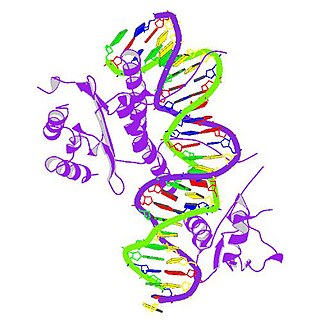
Serum response factor, also known as SRF, is a transcription factor protein.
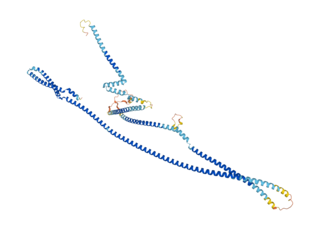
Cux1 is a homeodomain protein that in humans is encoded by the CUX1 gene.
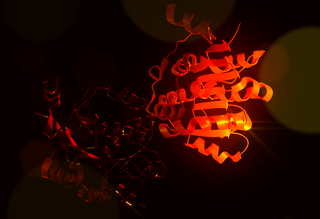
Probable ATP-dependent RNA helicase DDX5 also known as DEAD box protein 5 or RNA helicase p68 is an enzyme that in humans is encoded by the DDX5 gene.
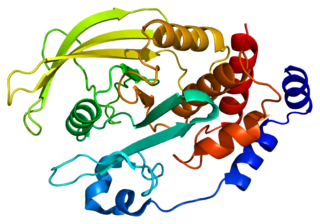
Tyrosine-protein phosphatase non-receptor type 2 is an enzyme that in humans is encoded by the PTPN2 gene.

Mediator of RNA polymerase II transcription subunit 14 is an enzyme that in humans is encoded by the MED14 gene.
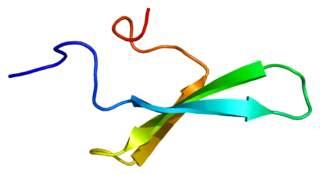
Transcription elongation regulator 1, also known as TCERG1, is a protein which in humans is encoded by the TCERG1 gene.

Nuclear transcription factor Y subunit gamma is a protein that in humans is encoded by the NFYC gene.

Nuclear protein 1 is a protein that in humans is encoded by the NUPR1 gene.

GA-binding protein subunit beta-1 is a protein that in humans is encoded by the GABPB1 gene.

Tyrosine-protein kinase BLK, also known as B lymphocyte kinase, is a non-receptor tyrosine kinase that in humans is encoded by the BLK gene. It is of the Src family of tyrosine kinases.

Nuclear factor 1 X-type is a protein that in humans is encoded by the NFIX gene. NFI-X3, a splice variant of NFIX, regulates Glial fibrillary acidic protein and YKL-40 in astrocytes.

Peroxisome proliferator-activated receptor gamma coactivator-related protein 1 is a protein that in humans is encoded by the PPRC1 gene.

snRNA-activating protein complex subunit 1 is a protein that in humans is encoded by the SNAPC1 gene.

Zinc finger protein 143 is a protein that in humans is encoded by the ZNF143 gene.

E74-like factor 2 (ELF2), formerly known as new Ets-related factor (NERF), is an ETS family transcription factor. In humans this protein is encoded by the ELF2 gene.

Activating signal cointegrator 1 is a protein that in humans is encoded by the TRIP4 gene.

Hepatocyte nuclear factor 3-gamma (HNF-3G), also known as forkhead box protein A3 (FOXA3) or transcription factor 3G (TCF-3G) is a protein that in humans is encoded by the FOXA3 gene.
This article incorporates text from the United States National Library of Medicine, which is in the public domain.